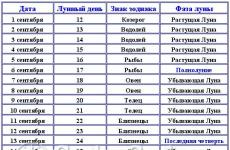Industrial dust collection plants. The best dust collection system: overview, technical characteristics and rules of operation. Uvp chip suction characteristics
Centrifugal dust collectors
The centrifugal dust collector is the most common type of mechanical dust collector, which is used in food, chemical, mining and many other industries. The main advantage of such dust collectors is their low cost, high productivity, simple mechanism, as well as rather simple and inexpensive operation. Compared to other types of centrifugal dust collectors, they have such advantages as reliable operation at high temperature and pressure, no parts that move, ease of repair and manufacture, and the ability to be used to capture abrasive particles.
Centrifugal dust collectors use centrifugal force to trap dust. The most popular centrifugal dust collectors are wet film cyclones. In such devices, the deposition of particles occurs using the action of a centrifugal and inert mechanism. Consequently, the efficiency of such devices is much higher than that of cyclones, because due to the presence of a wet film, secondary entrainment of dust does not occur. In addition, such devices are more efficient than scrubbers due to the fact that the speed of droplets and gas flow in them is much higher due to centrifugal force.
In wet cyclones, liquid is supplied along the inner walls of the apparatus and into its paraxial zone.
The most efficient wet dust collector is the Venturi scrubber, which is a high-speed scrubber. Such installations can be divided according to the area of use into:
- Low-pressure, used for concentration and purification of aspiration air. The hydraulic resistance of such devices is in the range from 3000 to 500 Pa.
- High-pressure apparatuses are used to purify gases from submicron and micron dust. Their resistance reaches 20,000-30,000 Pa.
The operation of such devices is based on a high-velocity gas flow, which intensively breaks up the liquid that irrigates it. And due to the turbulence of the gas flow, as well as a rather large difference between the velocity of liquid droplets and particles, dust particles are deposited on the liquid droplets that irrigate it.
In order to reduce the hydraulic resistance, the main part of the scrubber is made in the form of a Venturi tube, which gradually narrows at the inlet of gases and expands at their outlet. The gas inlet and outlet are connected by means of a nozzle.
For the stable operation of the apparatus, it is very important that there is complete and uniform irrigation of the liquid throat section. That is why the choice of the irrigation method is very important and affects the design of the apparatus.
There are three most commonly used throat irrigation methods:
- Peripheral. With this method of irrigation, nozzles or nozzles are mounted along the perimeter of the throat or confuser.
- Central. The sprinkling liquid enters the throat from the nozzles that are installed in the confuser or in front of it.
- Film. It is used most often in order to prevent the formation of deposits on the walls.
To calculate the hydraulic resistance, the expression is used:
Δp = Δp g + Δp l
In which Δp g is the hydraulic resistance of a dry pipe, which is due to the movement of gas:
Δp g = (ξ c ν g ² ρ g) / 2
Where ξ c is the coefficient of hydraulic resistance of a dry pipe,
and ν g is the velocity of the gases that are in the throat.
The efficiency of dust collection depends most of all on the specific irrigation and the velocity of the gases. The optimal ratio of dust flow rate and specific irrigation primarily depends on the dispersed composition of the dust. In this case, the specific amount of irrigation is in the range of 0.5-1.5 l / m 3 gases.
In addition, the efficiency of dust collection depends on the dispersion of the sprayed liquid droplets. Moreover, the smaller the droplets, the better the gas is purified.
To determine the average droplet diameter, an empirical formula is used:
d k = 4870 / ν² + 28.18 m 1.5
Centrifugal dust collectors (cyclones) are actively used in industry. Contaminated gas at a speed of 20 to 25 m / s enters the cyclone body. The gas flow moves tangentially, as a result of which it acquires a rotational motion. Dust particles are thrown back by centrifugal force and fall into the extreme layers of contaminated gas, which spiral downward along the walls of the cyclone. Suspended dust particles are removed from the unit through a special discharge pipe. The mixture of gas and dust rotates and rises upward, resulting in a vortex. This vortex moves along the axis of the installation towards the exhaust pipe and captures with it a part of the gas moving downward from the inner layers. This gas layer is characterized by a low content of dust particles. It moves along the tapered part of the body to the lower edge of the exhaust pipe. Upon reaching the lower edge of the exhaust pipe, the flow turns towards the axis of the cyclone.
Vortex dust collectors. Specifications
Vortex dust collectors are increasingly being used in industry. Such an apparatus resembles a cyclone, but its peculiarity is the presence of an additional swirling gas flow in it. Various models of such dust collectors are produced in the world, with a capacity of 300-40,000 m 3 / hour. The capacity of the vortex dust collectors increases with decreasing diameter.
In vortex dust collectors, atmospheric air, dusty gases, as well as the peripheral part of the clean gas stream are used as secondary gas.
If we compare vortex dust collectors with counter-flow cyclones, then the former have such advantages as working with high temperature gases, a good degree of purification, and regulation of the process of gas purification from dust by adjusting the secondary air flow rate. Among the disadvantages of vortex dust collectors should be highlighted the high hydraulic resistance, the need for a powerful draft device, as well as complex operation and installation.
d cr = √ (ν² / H) · (18μ g · ln) / ([ρ h -ρ z] · ω²)
in which H - is the high working area,
D tr - the diameter of the conducting pipe,
D 1 is the diameter of the device itself,
ω is the angular velocity of the gas to be cleaned.
Vortex Dust Collector

The design of the vortex dust collector can be seen in the figure. In such an apparatus, the raw gas flow enters the apparatus through the branch pipes, swirls, and then enters the working area of the vortex dust collector. Under the influence of centrifugal force, dust particles from the gas are directed to the walls of the apparatus. And under the influence of gravity, they are directed downward. After that, they go to a special bunker. In this case, the purified air flows through the exhaust pipe.
The efficiency of such a dust collector depends on the ratio of the amount of the upper Q 2 and lower Q 1 gas flow. For the vortex dust collector to operate at its maximum efficiency, Q 2 / Q 1 must be between 1.5 and 2.2.
- Determination of the diameter of the working area. For this, in the calculations, the speed of the dusty flow is taken as ν g = 5-10 (m / s):
D 1 = √4 · G / Π · ν г
- Determination of the dimensions of the dust collector depending on its diameter.
- Calculation of the hydraulic resistance of a vortex dust collector according to the formula:
Δp = (ξ · ρ · ν g ²) / 2
in which ξ is the coefficient of hydraulic resistance. In this case, the drag coefficients of the upper and lower flows must be taken into account.
Dynamic dust collectors. Peculiarities
A feature of dynamic dust collectors is that in such devices, the purification of gases from dust occurs not only with the help of centrifugal force, but also due to the Coriolis force, which occurs during the rotation of the impeller. In such dust collectors, in addition to the deposition of particles, the function of a draft device is also performed.
This type of dust collector uses more electricity than a fan with the same head and capacity. However, this energy consumption is still less than the required consumption when the centrifugal dust collector and fan are operated separately.
The design of the simplest dynamic dust collectors consists of a casing and an impeller. In this case, the impeller drives the raw gas. And under the influence of the Coriolis force and centrifugal force, dust particles are released from the gas.
Dynamic dust extractors are divided into two groups. The devices of the first group operate in such a way that a gas flow with dust is supplied to the central part of the wheel, and dust particles that are separated during the cleaning process move in the direction of the gas supply. Dust collectors of the second group, dust particles move in the direction opposite to the gas movement. In this case, the raw gas is sucked into the drums openings, which are located on its lateral surface.

The most popular dynamic dust extractors are dust extractors (see fig.). Such devices are used for the initial purification of gases for asphalt concrete plants, linear production. Such dynamic dust collectors are capable of retaining dust particles, the size of which is not less than 15 microns. The impeller on the shaft creates a pressure difference, with the help of which the gases are moved. And under the influence of centrifugal forces, dust particles are thrown away in the periphery, and then removed from the apparatus with a certain amount of gas.
Ventilation dust collectors UVP (Individual chip extractors UVP-IN series) designed for removing and cleaning air from shavings and sawdust and collecting waste in storage bags. Chip extractors are designed for use in small businesses with low waste generation. The air purification degree of the units is 99.9%. The units are used to remove contaminated air from individual machines or groups of machines and have a capacity of up to 7000 m 3 / h by air. Due to the design peculiarities, the distance from the machine to the chip suction, as a rule, should not exceed 2 m. The unit consists of a housing with a built-in dust fan; filters and waste accumulators are attached to the housing using easily removable clamps.
CHARACTERISTICS OF UVP CHIP PUMPS:
|
Productivity, m 3 / hour |
||||||
|
Air flow speed at the inlet, not less than m / s. |
||||||
|
Created vacuum, Pa |
||||||
|
Air purification degree,% |
||||||
|
Number and diameter of air ducts, pcs / mm |
||||||
|
Number and total volume of storage units, pcs / m З |
||||||
|
Unit overall dimensions, mm |
2450x1050x2500 |
З090х1050х2540 |
||||
|
Weight, no more, kg |
||||||
|
Electric power / motor, kW |
Execution options.
- For air purification from sawdust, shavings, chipboard sawdust, plastics, etc.
- For cleaning the air from sawdust, dust generated as a result of processing on MDF milling machines and similar materials with an increased filtering area.
When using installations of the IN series to clean the air from shavings, sawdust, dust generated as a result of processing MDF, chipboard, fiberboard and other materials, in which the proportion of light fines in the waste composition is relatively high, it is recommended to use filters with an increased filtering area. An increase in the area is necessary to reduce the gas and dust load on the filter material. This prevents deep penetration of dust particles into the material and increases the filter life. The units are designed for indoor use.
| Dust collector model | Performance, m 3 / h |
Installed capacity of electric motors, with frequency regulator, kW |
Dust collector volume, m 3 |
Quantity suctions up to, pcs. |
Weight, kg |
| Dust collecting unit PFC-1250 | 1250 | 1,1 | 0,3 | 1-2 | 83 |
| Dust collecting unit PFC-1500 | 1500 | 1,5 | 0,3 | 1-3 | 86 |
| Dust collecting unit PFC-2000 | 2000 | 2,2 | 0,3 | 1-4 | 91 |
| Dust collecting unit PFC-3000 | 3000 | 4 | 2x0.3 | 1-4 | 153 |
| Dust collecting unit PFC-4000 | 4000 | 5,5 | 2x0.3 | 1-4 | 163 |
| Dust collection unit PFC-5000 | 5000 | 7,5 | 2x0.3 | 1-4 | 177 |
| Dust collecting unit PFC-8000 | 8000 | 11/15 | 2x0.9 | 1-4 | 366 |
Overall dimensions of PFC dust collecting units
| Model | N | H * | h | d | A | B | c |
| Dust collecting unit PFC-1250 | 2430 | 2580 | 1305 | 140 | 1300 | 890 | 255 |
| Dust collecting unit PFC-1500 | 2450 | 2600 | 1305 | 160 | 1300 | 890 | 255 |
| Dust collecting unit PFC-2000 | 2500 | 2650 | 1310 | 180 | 1300 | 890 | 255 |
| Dust collecting unit PFC-3000 | 2460 | 2610 | 1260 | 225 | 1980 | 835 | - |
| Dust collecting unit PFC-4000 | 2520 | 2670 | 1260 | 250 | 1980 | 835 | - |
| Dust collection unit PFC-5000 | 2580 | 2730 | 1260 | 280 | 1980 | 835 | - |
| Dust collecting unit PFC-8000 | 2970 | 3120 | 2190 | 355 | 2470 | 1060 | - |
Payment Methods:
- Cashless payments for legal entities with VAT.
Delivery in Moscow and the Moscow region:
- Transport company Business lines or PEC, others by agreement.
- Goods "in stock" can be picked up from the warehouse on the day the funds are credited to our current account.
- Delivery is carried out within 1-2 working days from the moment your order is ready.
Delivery across Russia:
- Transport company (TC) Business lines or PEC, others by agreement. Delivery to the TC terminal is FREE. (3 times a week).
- Shipping cost of TC depends on the region. Our managers will calculate all the options and offer the most convenient and profitable delivery method for you.
- With our vehicles in the shortest possible time. Shipping cost is calculated based on the volume and weight of the cargo.
Guarantees
- Our company sells exclusively new goods, which are covered by a factory warranty from 12 months to 36 months.
Dust collecting units PFC are designed for fine air purification inside small and medium-sized industrial and agricultural premises. They can be used for air purification from wood dust and suspended shavings in woodworking workshops. The highest dustiness of the working environment is 15/5 g / m3. (in the ratio of large suspended fractions / dust).
The minimum air purity at the outlet of the PFC dust collector is 0.5 mg / m3.
Design features
Dust collecting units PFC have a mobile design, are produced in the form of a monoblock, delivered to the customer assembled in the packaging of the manufacturer.
The main units of the PFC series dust collection unit include the following structural elements:
The body is a supporting steel element of a welded structure, on which the rest of the units and parts of the equipment are located. A cyclone element is located in the body, in which the primary gravitational air cleaning from large suspended particles is carried out (the first stage of cleaning). In the cyclone, the air swirls, due to which the particles under the action of centrifugal force are pressed against the walls of the cyclone and settle in the dust collector.
In the lower part of the body there is a dust-collecting bag, which can be removed as it is filled to clean and dispose of the collected dust and debris. In the upper part of the body there is a cassette filter made of filter paper of class F9, where fine additional air purification (second stage of cleaning) takes place. In comparison with a filter sleeve (as, for example, in dust collectors for chip suction PUA-M), a cassette paper filter provides finer cleaning and has a longer resource.
In the basic version, together with the cassette, the unit is equipped with a system for manual regeneration of the inner surface, but at the request of the customer, it is possible to retrofit the PFC dust collector with an automatic regeneration system.
The purified air is discharged directly into the atmosphere of the room. The air is forced to move due to the operation of a low-noise dust fan installed on the case. An asynchronous electric motor is used as a drive. The inlet branch pipe of the fan has a circular cross-section and is directed downward (it is possible to connect an air sleeve or a non-extended air duct).
Manufacturing options
The standard-size range of PFC dust installations includes 7 standard models.
Installations for dust and shavings PFC-1250, PFC-1500 and PFC-2000 are produced in single versions. The rest of the models of the PFC dust-collecting units are made in a group version (two cassettes and two dust collectors).
The selection of the required model is carried out according to the nominal capacity, taking into account the actual operating conditions.
Operating conditions
Dust collecting units PFC are subject to operation indoors under U2 conditions in accordance with GOST 15150.
Types of dust collecting installations
Depending on the physical principle of operation, industrial separators are classified into dry mechanical, wet scrubbers, electric precipitators and bag filters. Figure 3 shows the classification of separators.
Table 3. Classification of separators
Dry mechanical separators
Dry mechanical separators are one of the most widely used dust collectors in the industry. This type of apparatus is distinguished by its simplicity of design and ease of maintenance and repair. However, in the case of a single application, dry mechanical separators have a low final efficiency. Therefore, the most common is a combination of a number of separator types or as multi-stage separators.
Dry mechanical separators are classified according to the type of aeromechanical forces involved. Distinguish between gravity, inertial and centrifugal dust collection chambers.
In gravitational dust-settling chambers, the sedimentation of particles occurs due to the forces of gravity (Fig. 1). The advantages of this type of apparatus are ease of manufacture and operation. But the values of the efficiency of such installations are small, and the space they occupy is significant. Therefore, this type of dust collector is rarely used, with the exception of cases in which they are pre-collectors for other separators, i.e. perform a pre-cleaning function.

Rice. 3. Dust collection chamber: a - the simplest chamber; b - a chamber with partitions; c - multi-shelf chamber; 1 - case; 2 - bunkers; 3 - partition; 4 - shelf
The dust settling rate of dry mechanical dust extractors is calculated as follows:
where X h- particle sedimentation rate, m / s; d h - particle diameter, m; nt- particle density, kg / m 3; cr- gas density, kg / m 3; g- acceleration of gravity, m / s 2; O h is the particle drag coefficient.
The minimum size of dust particles that will be completely deposited by gravity is found using Stokes' law using the following relationship:
where V G- volumetric flow rate of gases, m 3 / m; m G - dynamic coefficient of viscosity, Pa · s; B, L- chamber width and length, m.
The next type of dry dust collectors are inertial dust collectors. In these types of devices, dust particles under the influence of inertial force will move in the same direction and, after a sharp turn, fall into the bunker. Unfortunately, the effectiveness of such devices is low. Chambers with smooth rotation have the lowest hydraulic resistance. With a particle size of 25 - 30 microns, the degree of particle capture reaches 65 - 80%. Figure 2 shows the different types of dust collectors.

Rice. 4. Inertial dust collectors: a - with a partition; b - with a smooth turn of the gas flow; c - with an expanding cone; d - with side gas supply
One of the most commonly used dust collectors are cyclone dust collectors. Cyclone dust collectors are rarely used separately due to their low efficiency. Cases of single use of this type of filters are possible with unsatisfactory functionality or reliability of other types of separators. The following requirements are imposed on cyclone dust collectors: optimal separation efficiency with variable production parameters, taking into account the low requirements for maintenance and repair of permanent installations, resistance to abrasive wear, high temperatures, accumulation of adhering dust, provision of preventive measures against the explosion of flammable dust, small space and dr.
The main geometric characteristic of this type of apparatus is their diameter. With large diameters, their throughput decreases. Therefore, cyclones of small diameters (150 - 630 mm) are usually used.
If it is necessary to purify a gas stream with a high throughput, a number of parallel-installed cyclones with a diameter of 475 - 2500 mm are used.
To determine the separation efficiency in cyclone separators, the total separation efficiency obtained on the basis of experimental data is calculated. This calculation gives the most accurate result. To obtain higher efficiency, small diameter separators are grouped into blocks consisting of 2 to 12 separate cyclones.
The main advantages of cyclone devices are: 1) the absence of moving parts in the device; 2) reliability of operation at gas temperatures up to 500 ° С; 3) the ability to trap abrasive materials while protecting the inner surfaces of cyclones with special coatings; 4) trapping dust in dry form; 5) almost constant hydraulic resistance of the apparatus; 6) successful work at high gas pressures; 7) ease of manufacture; 8) maintaining a high fractional cleaning efficiency while increasing the dust content of gases. The disadvantages are: 1) high hydraulic resistance: 1250 - 1500 Pa; 2) poor collection of particles by size< 5 мкм ; 3) невозможность использования для очистки газов от липких загрязнений.
The main types of cyclones are shown in Fig. 3:

Rice. 5. The main types of cyclones (for gas supply): a - spiral; b - tangential; в - helical; d, e - axial (rosette)
The efficiency of collecting dust particles in a cyclone separator is directly proportional to the gas velocity in the power of Ѕ and inversely proportional to the diameter of the apparatus, also in the power of Ѕ.
In practice, cylindrical and conical cyclones are most often used. At the same time, cylindrical cyclones are highly efficient, and conical cyclones are highly efficient. The diameter of cylindrical cyclones is not more than 2000 mm, and the diameter of conical cyclones is not more than 3000 mm.
The hydraulic resistance of single cyclones is determined by the formula:
where X G is the velocity of gases in an arbitrary section of the apparatus, relative to which the value is calculated O c, m / s; O c- coefficient of resistance, which is determined as follows:
where K 1 - coefficient, respectively equal to 16 for cyclones with tangential gas inlet and 7.5 - for cyclones with outlet inlet; h 1 , b- dimensions of the inlet pipe, m; D TR- exhaust pipe diameter, m
The drag coefficient for group cyclones is calculated according to the following relationship:
where O c- coefficient of hydraulic resistance of a single cyclone; D TR- coefficient taking into account additional pressure losses associated with the arrangement of cyclones in a group (tabular value).
Vortex dust collectors are another type of dry dust collectors. Their main difference from the previous type is the presence of an auxiliary swirling gas flow. Fresh atmospheric air can be used as a secondary gas flow in vortex dust collectors. When dusty gases are used as a secondary gas, the productivity of the apparatus increases by 40 - 65% without a noticeable decrease in the cleaning efficiency. The critical diameter of particles completely captured in the dust collector is determined by the formula 15:
where X G- gas velocity in the free section of the apparatus, m / s; H- height of the dust collection chamber, m; D an- device diameter, m; D tr- diameter of the supply pipe, m; SCH- rotation speed, m / s.
The advantages of vortex dust collectors in comparison with cyclonic ones:
- 1) higher efficiency of collecting highly dispersed dust;
- 2) absence of abrasive wear of internal heating surfaces;
- 3) the possibility of gas cleaning at higher temperatures due to the use of cold gas;
- 4) the ability to regulate the separation process by changing the amount of secondary gas. The disadvantages of this type of dust collector:
- 1) the need to use an additional blowing device;
- 2) an increase in the total volume of gases passing through the separator due to secondary air;
- 3) great complexity of the apparatus in operation.
Below are the typical parameters of dry mechanical dust extractors.
Table 4. Typical parameters of dry mechanical dust collectors

In the process of manufacturing a variety of furniture products, a significant amount of fine dust and particles of the original blanks is produced. Such dust not only worsens the working conditions of production personnel, but also contributes to possible failures of moving equipment parts. That is why in the mass processes of woodworking, the presence of dust-collecting installations is provided.
Principle of operation and device
The systems under consideration perform the function of collecting and removing dust and small industrial waste, which contains such unsafe components as resins, alkaloids, toxic organic and inorganic particles. When inhaled as dust, they can cause a wide range of allergic reactions, skin problems and respiratory problems. Plywood, MDF and chipboard often used in woodworking are especially problematic due to the adhesive resins required to make them. The sequence of operation of modern dust-collecting ventilation units consists of the following stages:
- Capturing dust at its source.
- Extraction of small wood particles with suction fans.
- Filtration by fractions.
- Removal in special dust collectors.
To implement the set tasks, the dust collection unit includes a duct system, a set of coarse and fine filters, supply and exhaust fans, containers for waste collection. The corresponding areas are necessarily provided for in the design of production sites, and the balance of energy costs includes the consumption of electricity to drive the moving parts of the equipment under consideration.
In order to reduce the noise level, the installation of motors and prefabricated units is usually carried out outside the production area. At the same time, it simplifies access for cleaning and maintenance of all components of dust extraction ventilation units.
How the operating parameters are selected
The initial indicators for the selection of the standard size and capacity of the dust collection unit are:
- Air volume (in m3 / min) to be moved / removed;
- The maximum possible concentration of dust (MPC) in the room;
- The complexity of the duct system.
To remove finely dispersed wood dust in the branches for adequate dust extraction into the main air duct, a capacity of at least 110 ... 130 m3 / min is usually required. Depending on how many pieces of production equipment are connected to the system and how long the ducting is, one or more ventilation units may be required.
In accordance with the hygiene standards established by Rospotrebnadzor (GN 2.1.6.1125-2002), the MPC for dust in woodworking areas is 0.5 mg / m3, while the MPC for harmful components should not exceed 30% of the specified norm. Correct installation and grounding of the collection system (and especially ductwork) is important to prevent static build-up and develop negative pressure levels from ventilation air.
Brief description of the components of the dust collection system
The choice of the type, number and performance of the filters is decisive. Modern filter filtration units contain washable pre-filters. They capture dust particles as small as 3 microns (smaller particles are captured by smoke filters).
There is a disposable bag inside the filtration unit, the dimensions of which depend on the unit performance. In woodworking industries, it is recommended to install combined filters that allow you to clean the air, both in the area of the machine and in the general room.
Some of the dust extraction ventilation units are supplied with local work lighting, making them a good choice for installation directly at the process equipment. Preference is given to equipment that comes with a remote control.
The main requirement for a ventilation unit is the ability to trap toxic aerosols, fog, gases, vapors, smoke and dust while effectively filtering the air entering the air ducts.
The MDM-TECHNO company offers services of design, supply, installation supervision and field supervision over the operation of dust collecting plants. Upon conclusion of the contract, qualified specialists of the company will carry out a technical justification of the project, select the appropriate equipment, install and connect it with high quality. Customers are provided with a quality certificate. Post-warranty service of equipment is possible.






